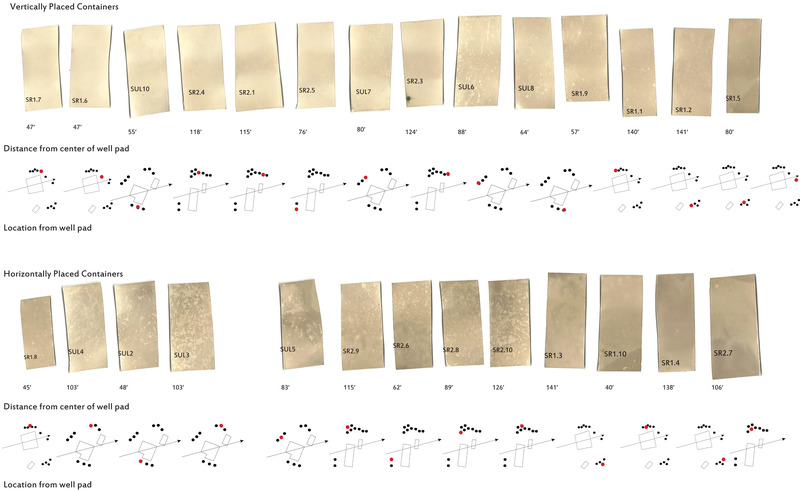
Hydrogen Sulfide
Snapshot: This is the main organizing page for information and research related to hydrogen sulfide in Public Lab. Please see links to wiki pages, research notes, and questions for further information.
Table of contents
- What is H2S and where is it found?
- Hydrogen sulfide regulations
- Hydrogen sulfide detection
- Existing work in Public Lab on H2S
- Hydrogen sulfide resources
What is hydrogen sulfide, what are its effects, and where is it found?
Hydrogen sulfide, with the chemical formula H2S, is a flammable gas that has a pungent odor at low concentrations and is odorless at higher concentrations. It can be a respiratory irritant and a neurotoxin. For more information about hydrogen sulfide health effects, please see: https://publiclab.org/wiki/hydrogen-sulfide-effects.
Hydrogen sulfide is naturally formed in low-oxygen conditions with sulfate present, such as in organic-rich sediments and thus in petrochemical source rocks. Upon exposure to oxygen, hydrogen sulfide readily oxidizes to sulfur dioxide or sulfate, and generally reacts within hours to days. For information about hydrogen sulfide sources and spatial and temporal variation, please see: https://publiclab.org/wiki/hydrogen-sulfide-environment
How are hydrogen sulfide emissions and exposures regulated?
In the United States, hydrogen sulfide emissions are only federally regulated to the extent that they contribute to sulfur dioxide formation, and thus acid rain. These emissions are regulated through the Prevention of Significant Deterioration of major stationary sources review and permitting. Exposure to hydrogen sulfide is mostly regulated in terms of occupational exposure, with very few states regulating ambient exposure to this toxin. For detailed information of environmental and occupational hydrogen sulfide regulations, please see: https://publiclab.org/wiki/hydrogen-sulfide-regulations
How can hydrogen sulfide be measured?
Hydrogen sulfide can be measured through a variety of means. While there is no federal regulatory method for hydrogen sulfide, agencies often measure hydrogen sulfide emissions through continuous sampling of gaseous emissions, and measure hydrogen sulfide workplace exposure through air grab samples chemically processed and discerned through gas chromatography. For routine monitoring, there are several hydrogen sulfide passive samplers that utilize color-changing oxidation-reduction reactions. For more information about laboratory, commercially available, and DIY hydrogen sulfide measurement methods, please see: https://publiclab.org/wiki/hydrogen-sulfide-detection
There are three low-cost hydrogen sulfide detection methods currently being explored by Public Lab community members. These include a silver halide photo paper method, a copper rod method, and an anodic stripping voltammetry method.
What work is being conducted in Public Lab regarding hydrogen sulfide?
To see all of the latest work relating to hydrogen sulfide by the Public Lab community, please see https://publiclab.org/tag/hydrogen-sulfide. You can subscribe to this tag to get email notifications when new work is posted to the website.
Research Notes
Here are some recent research notes regarding hydrogen sulfide:
Activities
To learn about activities you can do to test out hydrogen sulfide detection methods or use these tools in the field, please see: https://publiclab.org/tag/activity:hydrogen-sulfide.
Questions
Questions regarding hydrogen sulfide can be found at https://publiclab.org/questions/hydrogen-sulfide.
Please add your own here:
Where can I find more information?
Two particularly good resources are listed below. Other hydrogen sulfide wiki pages (mentioned above) include additional relevant resources.
Agency for Toxic Substance and Disease Registry. 2016. Hydrogen Sulfide Fact Sheet. https://www.atsdr.cdc.gov/ToxProfiles/tp114-c1-b.pdf.
National Research Council. 2010. Acute Exposure Guidelines. https://www.epa.gov/sites/production/files/2014-11/documents/hydrogen_sulfide_final_volume9_2010.pdf.